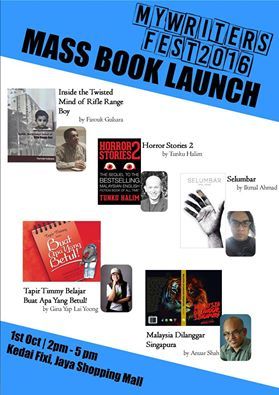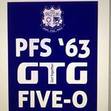Farouk Gulsara's Blog, page 158
September 27, 2016
http://asok22.wix.com/rifle-range-boy
http://.facebook.c...
Published on September 27, 2016 22:55
Nation over family?
Rustom (2016)
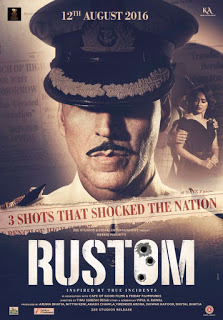 This is essentially a remake of Sunil Dutt-Leela Naidu starred 1963 film Yeh Rastey Hain Pyar Ke which in a retelling of the murder of a debonair businessman Prem Ahuja allegedly by a naval Commander, Kawas Nanavati in 1959.
This is essentially a remake of Sunil Dutt-Leela Naidu starred 1963 film Yeh Rastey Hain Pyar Ke which in a retelling of the murder of a debonair businessman Prem Ahuja allegedly by a naval Commander, Kawas Nanavati in 1959.
Using artistic licence, the screenplay had been altered to appeal to the general public. A supposed crime of passion had been changed to be a story of nationalism and sacrificial deed to protect the sovereignty of Mother India against corrupt naval officers and greedy businesspeople. No one wants to hear about a mother of three two-timing her husband. Hence, the wife's character is made to be a newly-wed drop-dead gorgeous bored wife.
Akshay Kumar, after acting a do-gooder patriotic Indian is Airlift, shows his nationalistic side in this film. He tries to endure hardship, humiliation, career and family pride just to protect the country he loves. The script is too predictable. The element of suspense is missing and as an audience, I did not empathise with the actors. Akshay Kumar as Rustom appears too wood-like to garner any reaction as he seems expressionless and somewhat robotic in 'reading' his lines. The comedy department also fell flat with lame oft-repeated punch lines! Only Ilena D'Cruz seem to show some emotions but then the acting is overshadowed more by manifestations in hour-glass party gowns than that of a remorseful victim of fornication.
Whenever I watch a period drama, I always try to look faux pas in the props. Maybe I did not look hard enough, but I did not find any. The cars that were seen in the movie were 1959 model of Mercedes and many Ambassadors which were in production from 1958.
Did not really leave a mark, 3/5. The whole film just whizzed through...http://asok22.wix.com/rifle-range-boy
http://.facebook.com/farouk.gulsara
 This is essentially a remake of Sunil Dutt-Leela Naidu starred 1963 film Yeh Rastey Hain Pyar Ke which in a retelling of the murder of a debonair businessman Prem Ahuja allegedly by a naval Commander, Kawas Nanavati in 1959.
This is essentially a remake of Sunil Dutt-Leela Naidu starred 1963 film Yeh Rastey Hain Pyar Ke which in a retelling of the murder of a debonair businessman Prem Ahuja allegedly by a naval Commander, Kawas Nanavati in 1959.Using artistic licence, the screenplay had been altered to appeal to the general public. A supposed crime of passion had been changed to be a story of nationalism and sacrificial deed to protect the sovereignty of Mother India against corrupt naval officers and greedy businesspeople. No one wants to hear about a mother of three two-timing her husband. Hence, the wife's character is made to be a newly-wed drop-dead gorgeous bored wife.
Akshay Kumar, after acting a do-gooder patriotic Indian is Airlift, shows his nationalistic side in this film. He tries to endure hardship, humiliation, career and family pride just to protect the country he loves. The script is too predictable. The element of suspense is missing and as an audience, I did not empathise with the actors. Akshay Kumar as Rustom appears too wood-like to garner any reaction as he seems expressionless and somewhat robotic in 'reading' his lines. The comedy department also fell flat with lame oft-repeated punch lines! Only Ilena D'Cruz seem to show some emotions but then the acting is overshadowed more by manifestations in hour-glass party gowns than that of a remorseful victim of fornication.
Whenever I watch a period drama, I always try to look faux pas in the props. Maybe I did not look hard enough, but I did not find any. The cars that were seen in the movie were 1959 model of Mercedes and many Ambassadors which were in production from 1958.
Did not really leave a mark, 3/5. The whole film just whizzed through...http://asok22.wix.com/rifle-range-boy
http://.facebook.com/farouk.gulsara

Published on September 27, 2016 09:30
September 25, 2016
Living on a prayer!
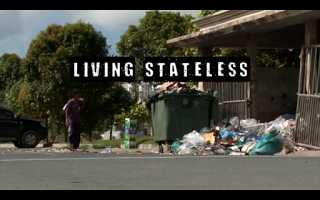 A Malaysian documentary on the issue of
A Malaysian documentary on the issue ofstatelessness among Filipino migrants in Sabah. Living Stateless (Di Ambang) (2014)
Created by Matthew Fillmore
Like stray animals, they are shooed. They bring the value of their property down. There are poor. There are stateless. Nobody wants them. They are the stateless people of Sabah.
While the rest of the country would like to think they are heading to be a developed country by 2020, this fringe part of the state has been battling to get rid of this group of people originally from the Philippines who are neither Filipinos nor are they Malaysians.
Without proper documentations, the elders cannot secure jobs, the children cannot get a decent education, no one gets immunisation and medical attention. They show the resilience of the human spirit and are the emblem of the never-say-die attitude of the human race. They live scrapping on discards, monetise trash and perform clandestine menial tasks. Some build up enough courage to rent a shack to cramp up their families. Children become creative creating games with garbage. A roller of an ergonomic chair is a pushcart; a discarded wheel is play-toy, and somebody's trashed plush toy is their life-long buddy.
Every stateless person has a sob story to tell as they ponder aimlessly into their future in which they do not foresee any ray of hope. The authorities try to expel them now and then. Undocumented immigrants are occasionally repatriated but like mushroom after rain, they keep on coming back. For them, even though they are treated like lepers here, life is still better in Sabah. There is economic activity. They have a chance to feed their family. In the southern islands of Philippines, there is nothing, only Abu Sayyaf and pandemonium.http://asok22.wix.com/rifle-range-boy
http://.facebook.com/farouk.gulsara

Published on September 25, 2016 09:30
September 23, 2016
When will it give?
Ten (Persian; 2007)
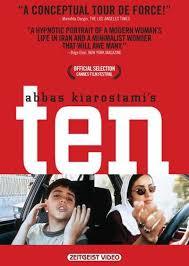 Director: Abbas Kiarostami
Director: Abbas Kiarostami
No, this is not Bo Derek starred 1979 romantic comedy! It is an Iranian minimalist movie done by an Iranian filmmaker extraordinaire, Abbas Kiarostami. Due to a rather hostile environment in Iran, moviemakers have to resort to ingenious ways to film without creating much of public fanfare.
It basically involves two cameras placed in the dashboard area; one pointed at the driver and another at the front passenger of a car. There are ten snippets involving the main character, a woman, and her interaction with her son, her sister, an elderly lady, a prostitute and a friend. We overhear her conversation with the various characters. From their conversations, as they travel through the streets, we can make a composite picture of her life and the life of the ordinary people in Iran.
The woman (the protagonist) picks up her son. Through their conversation, we realise that the woman has divorced her husband by falsely proclaiming that he was a drug addict. As the Iranian courts are biased against women, this was a sure-proof way to get her divorce. The son is obviously crossed with her mother for remarrying. He has no qualms in displaying his resentment in what most parents would view as showing disrespect, deserving a smack at the behind!
In another scene, after picking up her son from his father's place, she discovers that the father is single and spends time watching pornographic films. This shows us that, despite the image that the leaders of the country seem to portray, Iran as an examplar of an Islamic nation and all, things are not all rosy there.
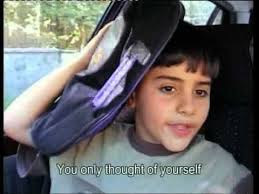 A conversation with her sister reveals that Islamic ladies in Iran are not just vessels of subservience. They too have desires and would like to pamper themselves and live life to the fullest for themselves, not the society.
A conversation with her sister reveals that Islamic ladies in Iran are not just vessels of subservience. They too have desires and would like to pamper themselves and live life to the fullest for themselves, not the society.
At another drive, she picks up an old lady who is on her way to a mausoleum (shrine). Here, the conversation goes along religious lines. It appears that not everyone is as religious that they would to be. Many find solace in religion for hope, not as a form of paying homage to cajole the prying eyes of the Protectors. Aren't they just the rest of world?
An interesting conversation took place when she picked up a drunk sex worker. They converse about the sin and the guilt about the oldest profession in the world, which the prostitute had none. It took her along with life and gave her support. She narrates her experiences with cheating husbands and the worthless utterance of the word 'I love you'. People do not say what they mean and do not mean what they say. Nobody owns anybody; everybody is free. Life is a trade between the wholesalers and the retailers; the wholesalers referring to the abundance of opportunities available outside the sanctity of matrimony versus the authorised retailers sanctioned by human laws.
One more scenario shows a young lady heading to the same mausoleum as before to pray for her wish to be fulfilled. She is hoping that her elusive boyfriend with taking the plunge and propose. She was so hopeful. So you can imagine, in another scene, how devasted she was when she told the driver that her boyfriend decided to call it quits, citing illogical reasons.
The film ends with the son again in a conversation with his mother. We soon realise that his way of thinking mirrors that of a misogynistic adult. He would probably grow up to be one of the patriarchal figures in a male-dominated Islamic world. We also realise that women in these societies also have and like to show their defiance in their own ways. When will it give? People are same everywhere. We can give a facelift or re-branding but deep inside they are all the same. Control over their thinking only works for a particular time. We cannot fool everybody all the time.http://asok22.wix.com/rifle-range-boy
http://.facebook.com/farouk.gulsara
 Director: Abbas Kiarostami
Director: Abbas Kiarostami
No, this is not Bo Derek starred 1979 romantic comedy! It is an Iranian minimalist movie done by an Iranian filmmaker extraordinaire, Abbas Kiarostami. Due to a rather hostile environment in Iran, moviemakers have to resort to ingenious ways to film without creating much of public fanfare.
It basically involves two cameras placed in the dashboard area; one pointed at the driver and another at the front passenger of a car. There are ten snippets involving the main character, a woman, and her interaction with her son, her sister, an elderly lady, a prostitute and a friend. We overhear her conversation with the various characters. From their conversations, as they travel through the streets, we can make a composite picture of her life and the life of the ordinary people in Iran.
The woman (the protagonist) picks up her son. Through their conversation, we realise that the woman has divorced her husband by falsely proclaiming that he was a drug addict. As the Iranian courts are biased against women, this was a sure-proof way to get her divorce. The son is obviously crossed with her mother for remarrying. He has no qualms in displaying his resentment in what most parents would view as showing disrespect, deserving a smack at the behind!
In another scene, after picking up her son from his father's place, she discovers that the father is single and spends time watching pornographic films. This shows us that, despite the image that the leaders of the country seem to portray, Iran as an examplar of an Islamic nation and all, things are not all rosy there.
 A conversation with her sister reveals that Islamic ladies in Iran are not just vessels of subservience. They too have desires and would like to pamper themselves and live life to the fullest for themselves, not the society.
A conversation with her sister reveals that Islamic ladies in Iran are not just vessels of subservience. They too have desires and would like to pamper themselves and live life to the fullest for themselves, not the society.At another drive, she picks up an old lady who is on her way to a mausoleum (shrine). Here, the conversation goes along religious lines. It appears that not everyone is as religious that they would to be. Many find solace in religion for hope, not as a form of paying homage to cajole the prying eyes of the Protectors. Aren't they just the rest of world?
An interesting conversation took place when she picked up a drunk sex worker. They converse about the sin and the guilt about the oldest profession in the world, which the prostitute had none. It took her along with life and gave her support. She narrates her experiences with cheating husbands and the worthless utterance of the word 'I love you'. People do not say what they mean and do not mean what they say. Nobody owns anybody; everybody is free. Life is a trade between the wholesalers and the retailers; the wholesalers referring to the abundance of opportunities available outside the sanctity of matrimony versus the authorised retailers sanctioned by human laws.
One more scenario shows a young lady heading to the same mausoleum as before to pray for her wish to be fulfilled. She is hoping that her elusive boyfriend with taking the plunge and propose. She was so hopeful. So you can imagine, in another scene, how devasted she was when she told the driver that her boyfriend decided to call it quits, citing illogical reasons.
The film ends with the son again in a conversation with his mother. We soon realise that his way of thinking mirrors that of a misogynistic adult. He would probably grow up to be one of the patriarchal figures in a male-dominated Islamic world. We also realise that women in these societies also have and like to show their defiance in their own ways. When will it give? People are same everywhere. We can give a facelift or re-branding but deep inside they are all the same. Control over their thinking only works for a particular time. We cannot fool everybody all the time.http://asok22.wix.com/rifle-range-boy
http://.facebook.com/farouk.gulsara

Published on September 23, 2016 09:30
September 21, 2016
The not-so-deadly sins
Se7en (1995)
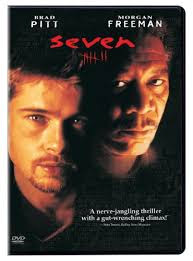 We are always told to avoid the seven deadly sins that damage humankind. Invariably, because of our inert weakness, we are lured into it. The motivation to stay clear of these temptations is the promise of eternal bliss in the afterlife. We get the chance to pass go, avoid purgatory, get the jail-free card and head straight to heaven. After all, our time on Earth is a fragment of our existence of our consciousness, which is forever.
We are always told to avoid the seven deadly sins that damage humankind. Invariably, because of our inert weakness, we are lured into it. The motivation to stay clear of these temptations is the promise of eternal bliss in the afterlife. We get the chance to pass go, avoid purgatory, get the jail-free card and head straight to heaven. After all, our time on Earth is a fragment of our existence of our consciousness, which is forever.
This film describes the tale of 2 mismatched cops who are called in to investigate a series of unrelated murders which later turns to be one done by a religious lunatic serial killer. All his crimes were based on the theme of the seven deadly sins; starting with a brutal murder of a morbidly obese individual and the word 'gluttony' scrawled on the wall, followed by the killing of an attorney and the word 'greed'.
Slowly, the background the cops are slowly unveiled as more bodies pile up, and they lose their patience.
Along the way, the audience is made to wonder whether an individual should take upon himself to right the wrong that he sees all around him. Is it his duty to see that God's law is upheld on Earth? Are we crumbling to the lure of the evil forces? Is our race doomed to annihilation from the word go? Are we consistently failing in keeping our temptations in check because of the original sin?
I heard a podcast some time ago looking at the seven deadly sins from a different perspective. Even though every sin overlaps with another, every misdeed may also have a beneficial component attached to it. It may even be a compelling force that could drive humankind a notch higher in civilisation. But is it the real advancement of race, purists may ask.
Envy that the neighbour will outdo him drives him to work harder just like the USA got the first man on the moon after being jealous of Russian success' in getting Yuri Gagarin to orbit Earth. Greed drives companies to embark on mammoth projects from which smaller players gain from spill-over effect. Gluttony (or obesity) is accepted in modern society as an aberration of the norm, not abnormal and not a sin. It is politically incorrect to berate someone because of their health. Some blame the lack of willpower, illnesses, complications of treatments, side effects of medications and uncontrollable sickness of the psyche as the reason of their malady. In other words, they are fat not by choice. Modern living with sedentariness is at fault here.
It is not that people want to be apathetic to things around him. Sometimes, things are way beyond his comprehension or means to make the change. In modern times, the overloading of information and the bombardment of news from all over makes him not more knowledgeable, but on the contrary, more confused. A simple man in the world controlled by the mega-rich 1% is helpless to change or challenge their economic might.
We should take pride in what we do; pride in our work, upholding the family and national pride. Anger channelled positively to drive one's ambition forward is always welcomed.
The interesting point always put forward by supporters of polyamorous relationships will often mention monogamy as a late invention in human civilisation. Nature with its philosophy of survival of the fittest, production of millions of gametes in the male species and the mating foreplay rituals make male biologically polygynous. Society had put restrictions to ensure that the offsprings are cared. Hence, lust is an inborn primitive drive.http://asok22.wix.com/rifle-range-boy
http://.facebook.com/farouk.gulsara
 We are always told to avoid the seven deadly sins that damage humankind. Invariably, because of our inert weakness, we are lured into it. The motivation to stay clear of these temptations is the promise of eternal bliss in the afterlife. We get the chance to pass go, avoid purgatory, get the jail-free card and head straight to heaven. After all, our time on Earth is a fragment of our existence of our consciousness, which is forever.
We are always told to avoid the seven deadly sins that damage humankind. Invariably, because of our inert weakness, we are lured into it. The motivation to stay clear of these temptations is the promise of eternal bliss in the afterlife. We get the chance to pass go, avoid purgatory, get the jail-free card and head straight to heaven. After all, our time on Earth is a fragment of our existence of our consciousness, which is forever.This film describes the tale of 2 mismatched cops who are called in to investigate a series of unrelated murders which later turns to be one done by a religious lunatic serial killer. All his crimes were based on the theme of the seven deadly sins; starting with a brutal murder of a morbidly obese individual and the word 'gluttony' scrawled on the wall, followed by the killing of an attorney and the word 'greed'.
Slowly, the background the cops are slowly unveiled as more bodies pile up, and they lose their patience.
Along the way, the audience is made to wonder whether an individual should take upon himself to right the wrong that he sees all around him. Is it his duty to see that God's law is upheld on Earth? Are we crumbling to the lure of the evil forces? Is our race doomed to annihilation from the word go? Are we consistently failing in keeping our temptations in check because of the original sin?
I heard a podcast some time ago looking at the seven deadly sins from a different perspective. Even though every sin overlaps with another, every misdeed may also have a beneficial component attached to it. It may even be a compelling force that could drive humankind a notch higher in civilisation. But is it the real advancement of race, purists may ask.
Envy that the neighbour will outdo him drives him to work harder just like the USA got the first man on the moon after being jealous of Russian success' in getting Yuri Gagarin to orbit Earth. Greed drives companies to embark on mammoth projects from which smaller players gain from spill-over effect. Gluttony (or obesity) is accepted in modern society as an aberration of the norm, not abnormal and not a sin. It is politically incorrect to berate someone because of their health. Some blame the lack of willpower, illnesses, complications of treatments, side effects of medications and uncontrollable sickness of the psyche as the reason of their malady. In other words, they are fat not by choice. Modern living with sedentariness is at fault here.
It is not that people want to be apathetic to things around him. Sometimes, things are way beyond his comprehension or means to make the change. In modern times, the overloading of information and the bombardment of news from all over makes him not more knowledgeable, but on the contrary, more confused. A simple man in the world controlled by the mega-rich 1% is helpless to change or challenge their economic might.
We should take pride in what we do; pride in our work, upholding the family and national pride. Anger channelled positively to drive one's ambition forward is always welcomed.
The interesting point always put forward by supporters of polyamorous relationships will often mention monogamy as a late invention in human civilisation. Nature with its philosophy of survival of the fittest, production of millions of gametes in the male species and the mating foreplay rituals make male biologically polygynous. Society had put restrictions to ensure that the offsprings are cared. Hence, lust is an inborn primitive drive.http://asok22.wix.com/rifle-range-boy
http://.facebook.com/farouk.gulsara

Published on September 21, 2016 16:55
September 20, 2016
Zombies, made in Korea!
Train to Busan (2016)
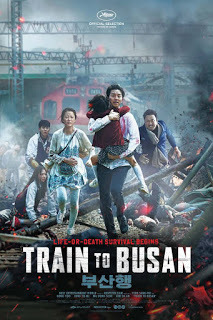 Nobody in my circle actually finds pleasure in watching zombie movies. Neither do I. I sneaked this one just for the heck of it. And the verdict is - splendid. Just like any disaster movie, instead of having natural disasters, animal attacks or alien invasion to scare the wits out of the audience, here, the offending agents are the fast spreading zombies induced by other infected brain-dead zombies whose purpose in their zombie life is to bite healthy people!
Nobody in my circle actually finds pleasure in watching zombie movies. Neither do I. I sneaked this one just for the heck of it. And the verdict is - splendid. Just like any disaster movie, instead of having natural disasters, animal attacks or alien invasion to scare the wits out of the audience, here, the offending agents are the fast spreading zombies induced by other infected brain-dead zombies whose purpose in their zombie life is to bite healthy people!
Putting all that senseless screaming and gore aside, which was tastefully done, by the way, there is a semblance of storytelling, development of character and purpose in narration.
A busy executive modern dad, Seok-Woo, a fund manager is having a crisis to handle in office. Despite his tight schedule, he has no choice but to send his daughter, Su-Ann, to his estranged wife in Busan to spend her birthday. The emotional scene of a child yearning for her father's love is nicely expressed. Then there is the paternal grandfather hoping that the younger generation would give marriage the reverence the previous generation did!
Trouble starts when they board the KTX bullet train from Seoul to Busan. An infected girl gets into the train at the last minute to create mayhem. The focus ends up with Seok-Wu, his daughter, a tough guy doting husband with his pregnant wife, a pair of high school kids, a pair of elderly sisters, a self-centered businessman and the train driver.
The suspense is held until the very end with a twister to finish.
The interesting dialogue in the film is when the tough guy with the pregnant wife character tells Seok-Wu, "You as a father work all your life for your daughter to give her everything but you still be the villain!" or something to that effect! It kind of resonated with me.http://asok22.wix.com/rifle-range-boy
http://.facebook.com/farouk.gulsara
 Nobody in my circle actually finds pleasure in watching zombie movies. Neither do I. I sneaked this one just for the heck of it. And the verdict is - splendid. Just like any disaster movie, instead of having natural disasters, animal attacks or alien invasion to scare the wits out of the audience, here, the offending agents are the fast spreading zombies induced by other infected brain-dead zombies whose purpose in their zombie life is to bite healthy people!
Nobody in my circle actually finds pleasure in watching zombie movies. Neither do I. I sneaked this one just for the heck of it. And the verdict is - splendid. Just like any disaster movie, instead of having natural disasters, animal attacks or alien invasion to scare the wits out of the audience, here, the offending agents are the fast spreading zombies induced by other infected brain-dead zombies whose purpose in their zombie life is to bite healthy people!Putting all that senseless screaming and gore aside, which was tastefully done, by the way, there is a semblance of storytelling, development of character and purpose in narration.
A busy executive modern dad, Seok-Woo, a fund manager is having a crisis to handle in office. Despite his tight schedule, he has no choice but to send his daughter, Su-Ann, to his estranged wife in Busan to spend her birthday. The emotional scene of a child yearning for her father's love is nicely expressed. Then there is the paternal grandfather hoping that the younger generation would give marriage the reverence the previous generation did!
Trouble starts when they board the KTX bullet train from Seoul to Busan. An infected girl gets into the train at the last minute to create mayhem. The focus ends up with Seok-Wu, his daughter, a tough guy doting husband with his pregnant wife, a pair of high school kids, a pair of elderly sisters, a self-centered businessman and the train driver.
The suspense is held until the very end with a twister to finish.
The interesting dialogue in the film is when the tough guy with the pregnant wife character tells Seok-Wu, "You as a father work all your life for your daughter to give her everything but you still be the villain!" or something to that effect! It kind of resonated with me.http://asok22.wix.com/rifle-range-boy
http://.facebook.com/farouk.gulsara

Published on September 20, 2016 09:01
September 18, 2016
Playing God?
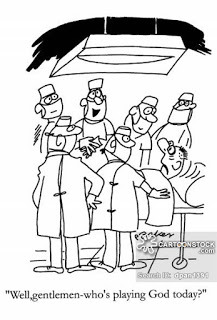 In times of tranquillity when your life is charted nicely in front you, you can talk. You would say, this is how one should do things, what is right, what is wrong, what is kosher, what is just and what is humane. The real test of humanity comes when civilisation is on the brink of collapse when law and order are in shambles.
In times of tranquillity when your life is charted nicely in front you, you can talk. You would say, this is how one should do things, what is right, what is wrong, what is kosher, what is just and what is humane. The real test of humanity comes when civilisation is on the brink of collapse when law and order are in shambles.At times of emergency when the social order collapses and everyone is hanging on to their dear lives on a thread, decency, common courtesy and even humanity is a misfit. Does it really? Or is it the place where humanity is put to the acid test?
Heard over a podcast about an incidence at a hospital during the time Hurrican Katrina hit New Orleans. The medical staff thought they were well prepared to handle the crisis, but they soon realised that panic button was hit when the levee broke on the second day. The hospital was flooded and by the third day, power supply was disconnected after the water reached the crucial areas. Mishandling of rescue services saw patients and medical providers stuck with very sick patients and depletion of backup power supply to sustain life. The worse hit were the chronically ill and the ones needing life support. Oxygen supply came to a halt, and the staff had the unenviable task of triaging who deserved the much-needed elixir of life- oxygen. They also had to decide who deserved to be saved first when helicopters eventually arrived. As transporting patients to the helipad on the top floor without elevators was a challenge, morbidly obese patients had to be left behind. Sanitation was a problem; toilets were non-functional.
Many of the patients on life support were literally breathless and dying. Very ills patients were in misery, knowing that they would be left behind due to space constraint in the rescue vessels. Some terminally ill patients were quite miserable. It was in this instance that someone thought of and perhaps administered drugs to the effect of relieving them of their miseries. In other words, maybe higher than usual doses of analgesic in the form opioids were given which proved fatal.
When the dust finally settled on the aftermath of the Katrina brouhaha, an investigation was initiated to determine any mala fide. Even though nobody was convicted, it did, however, spur discussions on the difficult decisions that the health personnel have to endure in their daily workplace and emergency situations, what more in a war zone.
http://www.radiolab.org/story/playing-god/http://asok22.wix.com/rifle-range-boy
http://.facebook.com/farouk.gulsara

Published on September 18, 2016 09:01
September 15, 2016
What is what anymore?
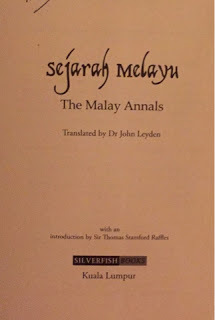 Sejarah Melayu (The Malay Annals) 2012.
Sejarah Melayu (The Malay Annals) 2012.
Translated by John Leyden (first publication 1821)
ISBN 978-983-3221-38-7
This 19th-century book has been rewritten and refurbished to present day written English, even though the Ye Olde English verbose composition is still evident. Sometimes one has the feeling that it appears like a direct translation from Classical Malay Language (Bahasa Klasik, Bahasa Istana). The author claims that the book is the result of the narration to him by the descendants of the Malacca Sultanate. It even has an introduction written by the 'founder' of Singapore, Sir Thomas Stamford Raffles.
History is said to be the noble truth as told by the victors. History has always been the political tool to push particular agendas. This cannot be truer in the case of the Malayan scenario. Its syllabi have changed so much over the years that it appears that my understanding of past had been totally misunderstood or perhaps I was not paying attention in history class!
This book gives yet another perspective on the origin of our Mother Land. I had to peruse it a second time just to ensure that I got my facts right. It narrates the source of people from this side of the earth, i.e., the ruling class as descendants of Alexander the Great (Iskander Dzulkarnain).
After many so and so marrying so and so, the rulers of Tanah Keling finally made it to the Malay archipelago. There is mention of many small kingdoms and island like Champa, Sumatra, Riau, Rokan, Bintan and such. However, sore missing is the Gangga Negara and Bujang Valley.
Sang Nila Utama was a carefree prince who was marooned on an island. He and his henchmen witnessed the appearance of a majestic beast which disappeared in a whisker. Awed by the animal, the prince wanted to know the name of the beast. None of those around him but one of his yeomen said that he had heard of such a magnificent creature which was called 'Singa'. Hence, the name 'Singhapura' was given to the island. He decided to reside there. It had nothing to do with a lion seen over the hill as was narrated to us.
The tale of legendary strongman of the Malay world, Badang, is told. As we have read, he is said to have acquired unique strengths from a troll whom he caught red-headed trying to steal fish from his trap. He had eaten the beast's vomitus to gain these powers. What the folktales did not tell us is how he had defeated a visibly not-his-match wrestler from Tanah Keling using underarm tactics, like getting him drunk the night before the fight!
There was a brief mention of the Boy Wonder in Singhapura when flying swordfishes terrorised the island. We know him as Hang Nadim, but here he has no name. The political scene then and now is no different. The up and coming shining star unceremoniously met an early death at the schemes of the jealous noblemen who felt threatened by the presence of a smart alec.
What do you know, there is no mention of a character anywhere in the book referred to as Parameswara! The renegade runaway prince who created hubbub all over the place and sat under a tree to witness the brave act of a strong-willed mouse deer to fight hunting dogs was named Raja Sekunder Shah (Raja Iskandar). He named the place after a tree.
After a series of successions by his sons, his grandson, Raja Kichil Besar, embraced Islam through an epiphany of a dream. Within his dream, he was allegedly taught to recite Quranic verses and to speak Arabic overnight. He was also told in his sleep that a Muslim missionary from Jeddah would arrive at the port the following day. Sure enough, he did, and the king embraced Islam, taking the name Sultan Muhammad Shah.
Sultan Muhammad is credited to have proposed many rituals and orders of the throne. The prohibition of yellow clothing, donning of golden and silver ornaments, yellow umbrella and the use of musical instruments (nobut) and the social mores of civilian conduct were his doing. His Bendahara was rebranded as Sri Wa Raja.
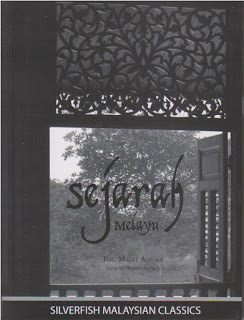 Just like the mythological tale of Ramayana where one of Dasaratha's wives held him to ransom to get her son to the throne, Sultan Muhammad's second wife from Rokan somehow tried to get her bloodline into the lineage of the Sultanate. The affable heir-in-waiting, Raja Kasim, whose mother, a Keling, was chased away to live with and as a fisherman. An Arabic holy man is the one who cajoled him back to the throne after a devious plan executed in cahoots with the Bendahara, Sri Wak Raja and with bloodshed, of course. Raja Kasim became Sultan Muzafar Shah. And the Arabs had the privilege of moving closer amongst the royal circles.
Just like the mythological tale of Ramayana where one of Dasaratha's wives held him to ransom to get her son to the throne, Sultan Muhammad's second wife from Rokan somehow tried to get her bloodline into the lineage of the Sultanate. The affable heir-in-waiting, Raja Kasim, whose mother, a Keling, was chased away to live with and as a fisherman. An Arabic holy man is the one who cajoled him back to the throne after a devious plan executed in cahoots with the Bendahara, Sri Wak Raja and with bloodshed, of course. Raja Kasim became Sultan Muzafar Shah. And the Arabs had the privilege of moving closer amongst the royal circles.The Bendahara lineage too continued with Sri Wa Raja. One of his offspring, Tun Perak, the headman of a small district of Calang, showed his mettle when the Siamese attacked the kingdom of Malacca. With his wit, he outwitted the foes not once but twice.
The port prospered. Chinese vessels had plied the trade route and had a cordial relationship with Malacca. The Indian link had always been there as their ancestory continued with blood relations and economic prowess. Hang Tuah showed his presence around this time. He came to prominence when he managed to quieten down an amok Javanese man with crisse (kris). Very much like Krishna in the Hindu scriptures, he is said to be a head-turner. He had a sort of a rock star persona that every girl (virgin and married ones) went weak on their knees. Husbands had to cage their raging wives behind closed doors metaphorically; such was his allure!
The legendary duel between Hang Tuah and his supposed deputy in his gang of five, Hang Jebat had always been agreed among the literary circles as the clash between the feudalistic minded simpletons and the thinking revolutionaries. Interestingly, in this book, the duel that had taken place was actually between Tuah and Casturi! Just like many other turning points in the Malacca Sultanate history which involved scuffle over the fairer sex, the duel sparked off after Casturi apparently bedded one of Sultan Mansur Shah's concubines.
Sultan Mansur Shah was also portrayed as a playboy, having sired an illegitimate child before ascending the throne. Sultan Alla ed din was famous for his undercover missions to maintain law and order in the state.
Hang Tuah is visualised here as a living person rather than a mystical being. Yes, he did have a daughter, and his son-in-law succeeded him as the Laksamana. And he did die, not mysteriously disappear into the foothill of Gunung Ledang as the legend says.
Women problem also rocked the kingdom during the reign of Sultan Mahmud Shah. Mesmerised by a fair maiden, he practically killed her husband to marry her. Unfortunately, she became a social recluse, depressed and was prone to induce self-abortion. She subsequently succumbed to her illness. The griefing Sultan, upon the insistence of the noblemen around him, gave a wild desire to ask the unattainable Princess of Gunung Ledang for her hand in marriage.
In one his last mission, the aged Tuah followed an entourage to the mountain. Tuah did not complete the hike. Someone else, Mamat did the actual audience with the princess. The proposition failed, of course, with her preposterous demands.
By the time, the Frangis (the Portuguese, Bengali Puteh) arrived to canvass the area; Malacca had over 190,000 inhabitants. It was gleaming with prosperity. The Indian Muslim traders were actually richer than the royalty and had a strong hold on the economy. Awed by its success, the Portuguese wizier, Albuquerque, sent ships to attack the port, unsuccessfully, twice.
Sultan Mahmud Shah was involved in life-changing events. He wrongly put to death a Bendahara who was bad-mouthed by a Keling trader over money issues. Lust also brought the monarch down. He used his power to snatch somebody's drop-dead wife, Tun Fatimah. She became a melancholic recluse who refused to come out of her room. Sultan Mahmud was indeed not the last ruler of Malacca. Later in life, he abdicated from his throne and rode away into the jungle after appointing his son, Sultan Ahmad as King. Sultan Ahmad was around when Malacca fell.http://asok22.wix.com/rifle-range-boy
http://.facebook.com/farouk.gulsara

Published on September 15, 2016 09:06
September 13, 2016
Propaganda
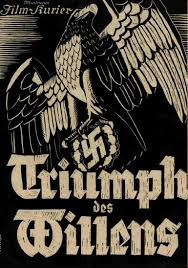 Triumph of Will ( Triumph des Willens, German; 1935)
Triumph of Will ( Triumph des Willens, German; 1935)
The Godfather of propaganda must have realised early in his career that visual representation of a lie, often repeated will eventually be the accepted truth. This, coming from a person who almost made it to the Academy of Fine Arts of Vienna, must be true.
Thanks to a party member, a certain Elisabeth Nietzsche, he gained access to the mind of one the greatest 20th-century thinker, Frederich Nietzsche, her brother. His unpublished book, 'Will of Power', which Nietzsche thought was too controversial to man, was made available to him. Many of his ideas are starkly portrayed here in this propaganda film.
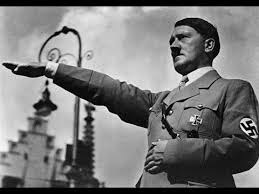 Like Zarathustra, in Nietzsche's book, Hitler appears from the clouds and disembarks the plane to present his good news to the people. If Zarathustra brought in the news from the mountains, that God is dead, this time, it is at the Nuremberg, and it is the Social Democrat party assembly. He is welcomed like a demi-god by floods of youths, farmers, women and looks like everybody in Deutschland! Happy faces are seen everywhere. Everybody goes overboard to express their pleasure to partake in a huge street parade. On exhibition are the various movements, governmental, army, youth movements, farmers' groups and much more.
Like Zarathustra, in Nietzsche's book, Hitler appears from the clouds and disembarks the plane to present his good news to the people. If Zarathustra brought in the news from the mountains, that God is dead, this time, it is at the Nuremberg, and it is the Social Democrat party assembly. He is welcomed like a demi-god by floods of youths, farmers, women and looks like everybody in Deutschland! Happy faces are seen everywhere. Everybody goes overboard to express their pleasure to partake in a huge street parade. On exhibition are the various movements, governmental, army, youth movements, farmers' groups and much more.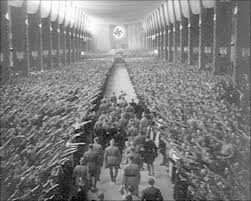 Also seen in the documentary are the members of the Nazi circles of who and who, all ashamedly showing their allegiance to Hitler and the Party. New speeches are spoken. Hitler's speech sounds like many of the rhetorics that we hear today about making the country great. The emotional theatric display of party members ends with one by Deputy Fuhrer with a phrase, "The Party is Hitler, but Hitler is Germany as Germany is Hitler. Hail Victory.
Also seen in the documentary are the members of the Nazi circles of who and who, all ashamedly showing their allegiance to Hitler and the Party. New speeches are spoken. Hitler's speech sounds like many of the rhetorics that we hear today about making the country great. The emotional theatric display of party members ends with one by Deputy Fuhrer with a phrase, "The Party is Hitler, but Hitler is Germany as Germany is Hitler. Hail Victory.In this documentary, we are showcased the greatness of German cinematography. It must have been quite a feat to do an outdoor shooting of a street parade involving a mammoth crowd. Aerial shots, both of a flying plane amongst the clouds and of marching bands from atop a building must be avant-garde. The Germans who introduced the genre of noir film with its typical long shadow shots show their prowess at night filming.http://asok22.wix.com/rifle-range-boy
http://.facebook.com/farouk.gulsara

Published on September 13, 2016 16:09
September 11, 2016
The power of imagination...
Dedicated to PC who wanted to know my barber's philosophy...
 During our many hair-cutting sessions, I used to engage in deeply engaging banters about philosophy and religion, specifically religions of the Indian sub-continent. The barber shop is a simple establishment, in keeping with his simple philosophies of life, has seen much changes since the 80s when it was first set up. Starting life with a strict religious upbringing in his childhood and early adulthood, certain life changing events indeed changed his outlook on life, belief in God and attitude towards the self-professed upholders of the organised religion. In other words, there is the Maker (Nature, Cosmos, whatever) and there is him. That is all. A dash across two dates. The darkness before your existence and after, no previous lives and no after-life. Above us only sky and no cycles of re-birth and no book of Judgement too.
During our many hair-cutting sessions, I used to engage in deeply engaging banters about philosophy and religion, specifically religions of the Indian sub-continent. The barber shop is a simple establishment, in keeping with his simple philosophies of life, has seen much changes since the 80s when it was first set up. Starting life with a strict religious upbringing in his childhood and early adulthood, certain life changing events indeed changed his outlook on life, belief in God and attitude towards the self-professed upholders of the organised religion. In other words, there is the Maker (Nature, Cosmos, whatever) and there is him. That is all. A dash across two dates. The darkness before your existence and after, no previous lives and no after-life. Above us only sky and no cycles of re-birth and no book of Judgement too.
During one of our colloquy, he brought up the notion of the origin of Lord Muruga, the deity well known amongst the South Indian Hindus, specifically in Tamil Nadu. He asked me why the particular God is not seen as a member of the Shiva clan in the North but is prominently featured in the Southern part of the sub-continent. I put it to him about the legend that has it that an evil was terrorising that area and about the product of Shiva, the Destroyer, the six babies in six lotuses in Saravana Poigai, and about Sakthi, the nurturing mother, who provided him with the spear of destruction to douse the spitfire of evil!
He rubbished my understanding of the whole concept of Arumugam, the six-headed Peter Pan-like ever young, robust stalwart of truth and justice who could span the entire universe in a single swift in his majestic peacock.
In his books, legend has it that South India was faced some kind of epidemic. Many fell prey to this highly contagious communicable disease. The elders roped in many high notched medical practitioners of the day to find an immediate solution. The consensus was to build a big contraption with six medicinal elements into the city lake, the drinking source for its inhabitants. Sure enough, the disease got controlled, and the city dwellers were eternally grateful.
Over time, the genesis of the cure got romanticised. The ray of thoughts from the physicians became grandiosed as ray of fire arising from Lord Shiva's Netrikann (Third Eye); the train of thought wavelengths became Lord Agni who carried the ray; the six Karthigei pengal as the executors of the task; Goddess Sakthi as the alchemist who fused the ingredients and gave it potency. The invincible enemy, the disease, is, of course, the villain, the Asuras.
Guess we will never know the real story. Even though, the Tamilians claim exclusivity on the rights of Murugan or Saravana or Subramanya or Karthikeya, references to the deity had been traced back in Sanskrit literature in 1st millennium BCE. Even coins resembling Skanda with a silhouette of a peacock in the background were found in ruins of tribes of Punjab and Gupta kingdom!
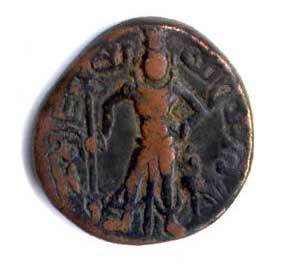 Yaudheya coinage of Punjab (300-340 AD): Karthikeya standing facing, holding sceptre; peacock on right.http://asok22.wix.com/rifle-range-boy
Yaudheya coinage of Punjab (300-340 AD): Karthikeya standing facing, holding sceptre; peacock on right.http://asok22.wix.com/rifle-range-boy
http://.facebook.com/farouk.gulsara
 During our many hair-cutting sessions, I used to engage in deeply engaging banters about philosophy and religion, specifically religions of the Indian sub-continent. The barber shop is a simple establishment, in keeping with his simple philosophies of life, has seen much changes since the 80s when it was first set up. Starting life with a strict religious upbringing in his childhood and early adulthood, certain life changing events indeed changed his outlook on life, belief in God and attitude towards the self-professed upholders of the organised religion. In other words, there is the Maker (Nature, Cosmos, whatever) and there is him. That is all. A dash across two dates. The darkness before your existence and after, no previous lives and no after-life. Above us only sky and no cycles of re-birth and no book of Judgement too.
During our many hair-cutting sessions, I used to engage in deeply engaging banters about philosophy and religion, specifically religions of the Indian sub-continent. The barber shop is a simple establishment, in keeping with his simple philosophies of life, has seen much changes since the 80s when it was first set up. Starting life with a strict religious upbringing in his childhood and early adulthood, certain life changing events indeed changed his outlook on life, belief in God and attitude towards the self-professed upholders of the organised religion. In other words, there is the Maker (Nature, Cosmos, whatever) and there is him. That is all. A dash across two dates. The darkness before your existence and after, no previous lives and no after-life. Above us only sky and no cycles of re-birth and no book of Judgement too.During one of our colloquy, he brought up the notion of the origin of Lord Muruga, the deity well known amongst the South Indian Hindus, specifically in Tamil Nadu. He asked me why the particular God is not seen as a member of the Shiva clan in the North but is prominently featured in the Southern part of the sub-continent. I put it to him about the legend that has it that an evil was terrorising that area and about the product of Shiva, the Destroyer, the six babies in six lotuses in Saravana Poigai, and about Sakthi, the nurturing mother, who provided him with the spear of destruction to douse the spitfire of evil!
He rubbished my understanding of the whole concept of Arumugam, the six-headed Peter Pan-like ever young, robust stalwart of truth and justice who could span the entire universe in a single swift in his majestic peacock.
In his books, legend has it that South India was faced some kind of epidemic. Many fell prey to this highly contagious communicable disease. The elders roped in many high notched medical practitioners of the day to find an immediate solution. The consensus was to build a big contraption with six medicinal elements into the city lake, the drinking source for its inhabitants. Sure enough, the disease got controlled, and the city dwellers were eternally grateful.
Over time, the genesis of the cure got romanticised. The ray of thoughts from the physicians became grandiosed as ray of fire arising from Lord Shiva's Netrikann (Third Eye); the train of thought wavelengths became Lord Agni who carried the ray; the six Karthigei pengal as the executors of the task; Goddess Sakthi as the alchemist who fused the ingredients and gave it potency. The invincible enemy, the disease, is, of course, the villain, the Asuras.
Guess we will never know the real story. Even though, the Tamilians claim exclusivity on the rights of Murugan or Saravana or Subramanya or Karthikeya, references to the deity had been traced back in Sanskrit literature in 1st millennium BCE. Even coins resembling Skanda with a silhouette of a peacock in the background were found in ruins of tribes of Punjab and Gupta kingdom!
 Yaudheya coinage of Punjab (300-340 AD): Karthikeya standing facing, holding sceptre; peacock on right.http://asok22.wix.com/rifle-range-boy
Yaudheya coinage of Punjab (300-340 AD): Karthikeya standing facing, holding sceptre; peacock on right.http://asok22.wix.com/rifle-range-boyhttp://.facebook.com/farouk.gulsara

Published on September 11, 2016 09:01

